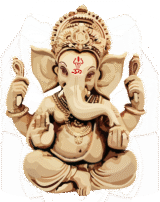🕰️ Muhurat in Hindu Culture: Aligning Life with Cosmic Rhythm
🕉️ What Is a Muhurat?
In Hindu spiritual tradition, a Muhurat (or Muhurta) is an auspicious time window chosen to begin important activities—be it a wedding, housewarming, business launch, or religious ritual. Rooted in Vedic astrology, it reflects the belief that time is not neutral—each moment carries a unique energy shaped by planetary alignments, lunar phases, and cosmic vibrations.
The word Muhurat comes from Sanskrit:
- Muhu = moment
- Rta = cosmic order
Together, it implies a moment aligned with universal harmony.
🌟 Why Is Muhurat Important?
Choosing the right Muhurat is believed to:
- Maximize success and minimize obstacles
- Align actions with divine timing
- Enhance spiritual potency of rituals
- Invite blessings from deities and ancestors
- Create psychological confidence and clarity
In Hinduism, even everyday events—like naming a child or buying a vehicle—are often timed with a Muhurat to ensure positive outcomes and karmic alignment2.
🌌 How Does Muhurat Impact Life?
| 💠 Life Area | 🌈 Impact of Muhurat Timing |
|---|---|
| 🧘 Health & Wellness | Supports healing, recovery, and vitality |
| 💑 Relationships | Strengthens emotional harmony and marital stability |
| 💼 Career & Business | Enhances prosperity, growth, and decision-making |
| 🛕 Rituals & Poojas | Amplifies spiritual energy and divine connection |
| 🏠 Home & Property | Ensures peace, protection, and abundance in living spaces |
| 📚 Education | Boosts focus, retention, and success in learning |
For example, a wedding Muhurat ensures the couple begins their journey under favorable planetary influences, while a Griha Pravesh Muhurat invites prosperity into a new home1.
🔍 How Is Muhurat Determined?
Astrologers use Panchang (Hindu calendar) and birth charts to calculate Muhurats based on:
🪐 Key Astrological Factors
- Tithi (lunar day)
- Nakshatra (constellation)
- Yoga & Karana (planetary combinations)
- Lagna (ascendant sign)
- Planetary transits (especially Jupiter, Venus, Saturn, Rahu-Ketu)
- Avoidance of inauspicious periods like Rahu Kaal, Chaturmas, or Adhik Maas
Each day is divided into 30 Muhurtas, each lasting 48 minutes, and astrologers identify which ones are Shubh (auspicious) or Ashubh (inauspicious)2.
🌟 Prominent Types of Muhurats
🔆 Abhijit Muhurat
- Timing: Occurs daily around midday, lasting ~48 minutes (24 minutes before and after solar noon).
- Significance: Considered the most universally auspicious time, even if other planetary alignments are unfavorable.
- Ideal For: Starting new ventures, travel, pujas, proposals, or legal filings.
- Note: Avoid using Abhijit Muhurat on Wednesdays, as it may coincide with Rahu Kaal, making it inauspicious2.
🌠 Amrit Kaal
- Timing: Varies based on Panchang; often overlaps with favorable planetary combinations.
- Significance: Literally means “nectar time”—a period of maximum positivity and success.
- Ideal For: Spiritual rituals, investments, ceremonies, and healing practices.
- Note: In modern usage, “Amrit Kaal” also refers to India’s transformative phase from 2022 to 2047, symbolizing national progress4.
🌄 Brahma Muhurat
- Timing: Begins 1 hour 36 minutes before sunrise, lasting 48 minutes.
- Significance: Known as the Creator’s Hour, ideal for spiritual awakening and meditation.
- Ideal For: Yoga, mantra chanting, introspection, reading scriptures, and planning your day.
- Note: Avoid eating or doing mentally strenuous tasks during this time6.
🧭 Other Notable Muhurats
🧘 Choghadiya Muhurat
- Used In: Gujarat and western India.
- Divides the day into 8 segments, each ~1.5 hours.
- Types: Shubh, Labh, Amrit (auspicious); Kal, Rog, Udveg (inauspicious).
🔮 Rahu Kaal
- Timing: Varies daily; lasts ~90 minutes.
- Significance: Considered inauspicious due to Rahu’s shadowy influence.
- Avoid: Starting new tasks, ceremonies, or travel.
🪔 Shubh Hora
- Based On: Planetary hours (Hora).
- Each day starts with the ruling planet’s hour (e.g., Sunday = Sun Hora).
- Ideal For: Choosing favorable planetary hours for specific tasks (e.g., Venus Hora for love/marriage).
🔥 Vijaya Muhurat
- Timing: Occurs in the afternoon on Vijayadashami.
- Significance: Symbolizes victory and success.
- Ideal For: Starting new ventures, weapons worship, or spiritual sadhana.
🌌 Nishita Kaal
- Timing: Midnight period.
- Significance: Used for Tantric rituals, Shiva worship, and deep meditation.
🧙♂️ How Can Astrologers Help?
Astrologers play a vital role in:
- Analyzing birth charts to personalize Muhurat selection
- Identifying planetary strengths and doshas
- Recommending rituals or remedies if no ideal Muhurat is available
- Guiding spiritual alignment for ceremonies and life transitions
- Offering symbolic Muhurats when practical constraints exist
They ensure that your actions are cosmically supported, whether you’re planning a wedding, launching a business, or performing a sacred pooja7.
✨ Final Thoughts
Muhurat is more than timing—it’s a spiritual strategy. It reflects the Hindu belief that life flows best when aligned with the cosmos. Whether you’re deeply traditional or spiritually curious, honoring Muhurat can bring clarity, confidence, and divine grace to your most important moments.
🌠 When the stars whisper “now,” the universe opens its arms.
